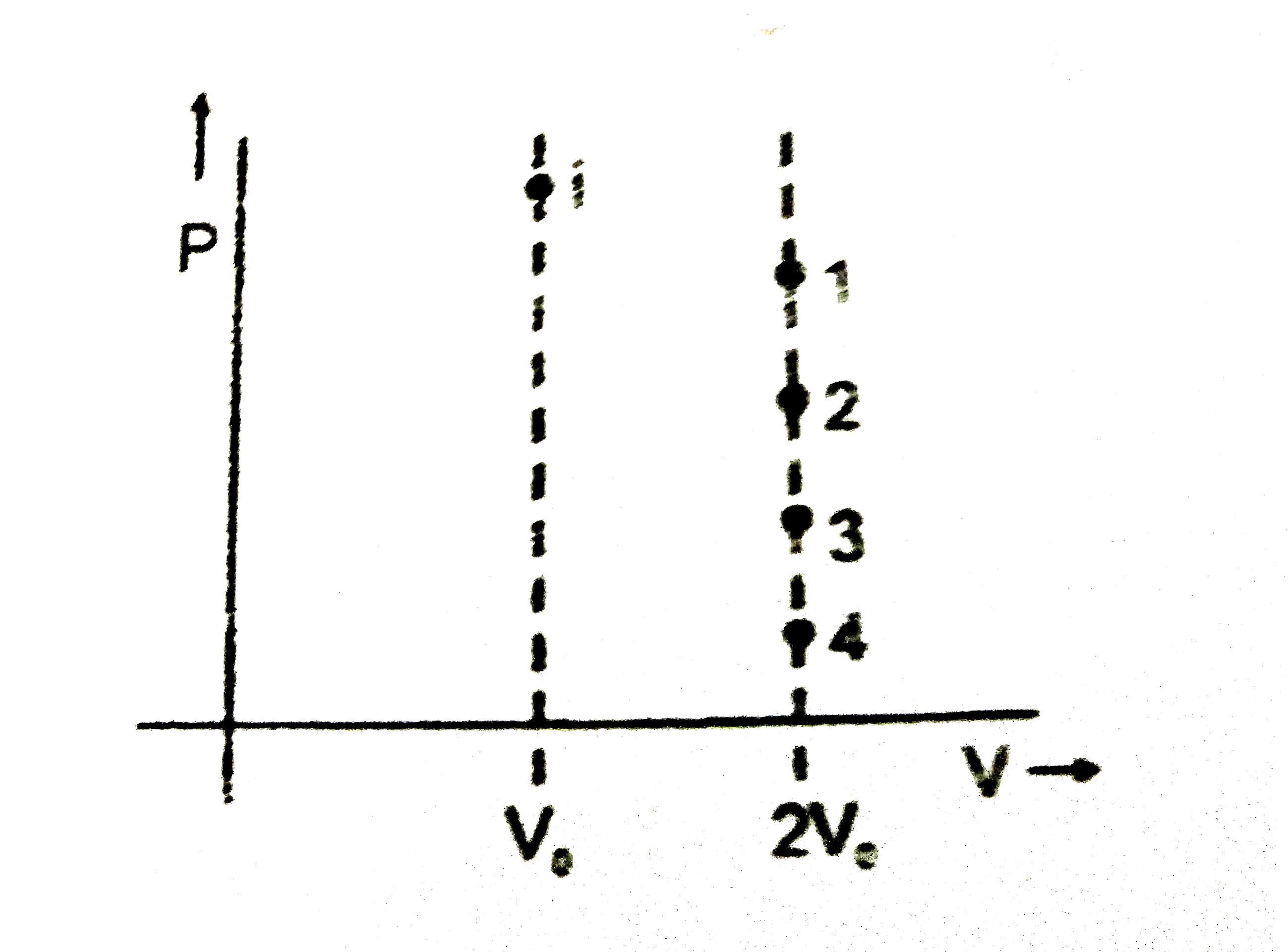Define the Reversible process.
Step-by-Step Solution:
1. Definition of Reversible Process: A reversible process in thermodynamics is defined as a process that can be reversed at any stage by making an infinitesimally small change in a variable, such as pressure or temperature. This means that the system can return to its original state without any net change in the surroundings.
2. Characteristics of Reversible Processes:
- Infinitesimally Slow: Reversible processes occur very slowly, allowing the system to remain in thermal equilibrium throughout the process. This ensures that the system can adjust to changes without any gradients in temperature or pressure.
- Imaginary Process: Reversible processes are idealized and cannot be achieved in real-life scenarios. In reality, all processes involve some irreversibility due to friction, turbulence, and other factors.
- Maximum Work Output: In a reversible process, the work done by or on the system is maximized. This is because the system can be brought back to its original state without any loss of energy.
3. Example to Illustrate:
- Consider the melting of ice cream when heated. If you heat ice cream, it melts and becomes liquid. If you then freeze the liquid back into ice cream, you have reversed the process. This is a simplified example of a reversible process.
- Another example is the expansion and compression of gas in a piston. If you slowly push or pull the piston, the gas can expand or compress while remaining in thermal equilibrium, allowing the process to be reversible.
Summary:
In summary, a reversible process is a thermodynamic process that can be reversed by a small change in conditions, is performed infinitely slowly, is an idealized concept, and allows for maximum work output.
- Infinitesimally Slow: Reversible processes occur very slowly, allowing the system to remain in thermal equilibrium throughout the process. This ensures that the system can adjust to changes without any gradients in temperature or pressure.
- Imaginary Process: Reversible processes are idealized and cannot be achieved in real-life scenarios. In reality, all processes involve some irreversibility due to friction, turbulence, and other factors.
- Maximum Work Output: In a reversible process, the work done by or on the system is maximized. This is because the system can be brought back to its original state without any loss of energy.
- Consider the melting of ice cream when heated. If you heat ice cream, it melts and becomes liquid. If you then freeze the liquid back into ice cream, you have reversed the process. This is a simplified example of a reversible process.
- Another example is the expansion and compression of gas in a piston. If you slowly push or pull the piston, the gas can expand or compress while remaining in thermal equilibrium, allowing the process to be reversible.
In summary, a reversible process is a thermodynamic process that can be reversed by a small change in conditions, is performed infinitely slowly, is an idealized concept, and allows for maximum work output.
Topper's Solved these Questions
- CHEMICAL THERMODYNAMICS Book:ICSEChapter:CHEMICAL THERMODYNAMICS Exercise:ESSAY (LONG ANSWER) TYPE QUESTIONS
Explore 32 Videos
- CHEMICAL THERMODYNAMICS Book:ICSEChapter:CHEMICAL THERMODYNAMICS Exercise:OBJECTIVE (MULTIPLE CHOCE) TYPE QUESTIONS
Explore 59 Videos
- CHEMICAL THERMODYNAMICS Book:ICSEChapter:CHEMICAL THERMODYNAMICS Exercise:VERY SHORT ANSWER TYPE QUESTIONS
Explore 56 Videos
- CHEMICAL BONDING AND MOLECULAR STRUCTUREBook:ICSEChapter:CHEMICAL BONDING AND MOLECULAR STRUCTUREExercise:NCERT TEXT-BOOK EXERCISES ( WITH HINTS AND SOLUTIONS)
Explore 47 Videos
- CLASSIFICATION OF ELEMENTS AND PERIODICITY IN PROPERTIESBook:ICSEChapter:CLASSIFICATION OF ELEMENTS AND PERIODICITY IN PROPERTIESExercise:NCERT TEXT-BOOK. EXERCISE (With Hints and Solutions)
Explore 63 Videos
Similar Questions
A gaseous sample is generally allowed to do only expansion/compression type work against its surroundings The work done in case of an irreversible expansion ( in the intermediate stages of expansion/compression the states of gases are not defined). The work done can be calculated using
dw=−PextdV
while in case of reversible process the work done can be calculated using
dw=−PdV where P is pressure of gas at some intermediate stages. Like for an isothermal reversible process. Since P=nRTV, so
w=∫dW=−vf∫vinRTV.dV=−nRTln(VfVi)
Since dw=PdV so magnitude of work done can also be calculated by calculating the area under the PV curve of the reversible process in PV diagram.
If four identical samples of an ideal gas initially at similar state (P0,V0,T0) are allowed to expand to double their volumes by four different process.
I: by isothermal irreversible process
II: by reversible process having equation P2V= constant
III. by reversible adiabatic process
IV. by irreversible adiabatic expansion against constant external pressure.
Then, in the graph shown in the final state is represented by four different points then, the correct match can be

View SolutionWhich of the following is incorrect for isothermal reversible process
View SolutionIf ΔStotal is positive the process is ..... and occurs in the ..... as mentioned. The reverse process is .......
View SolutionFor the reversible process, the value of ΔS is given by the expression:
View SolutionFor the reversible process, the value of ΔS is given by the expression:
View SolutionAssertion:- Reversible process and a cyclic process are the
same type of processes.
Reason:- ΔHcylic and ΔEcylic are zero.
View SolutionCorrect the following statements by changing the underlined part of the sentence (Do not change the whole sentence)
Catalyst increases the rate of forward reaction and decreases the rate of backward reaction––––––––––––––––––––––––––––––––––––––––––––––– in a reversible process.
View SolutionCorrect the following statements by changing the underlined part of the sentence (Do not change the whole sentence)
Catalyst increases the rate of forward reaction and decreases the rate of backward reaction––––––––––––––––––––––––––––––––––––––––––––––– in a reversible process.
View SolutionCorrect the following statements by changing the underlined part of the sentence (Do not change the whole sentence)
Catalyst increases the rate of forward reaction and decreases the rate of backward reaction––––––––––––––––––––––––––––––––––––––––––––––– in a reversible process.
View SolutionCalculate work done during isothermal reversible process when
5mol ideal gas is expanded so that its volume is doubled at 400K.
View Solution